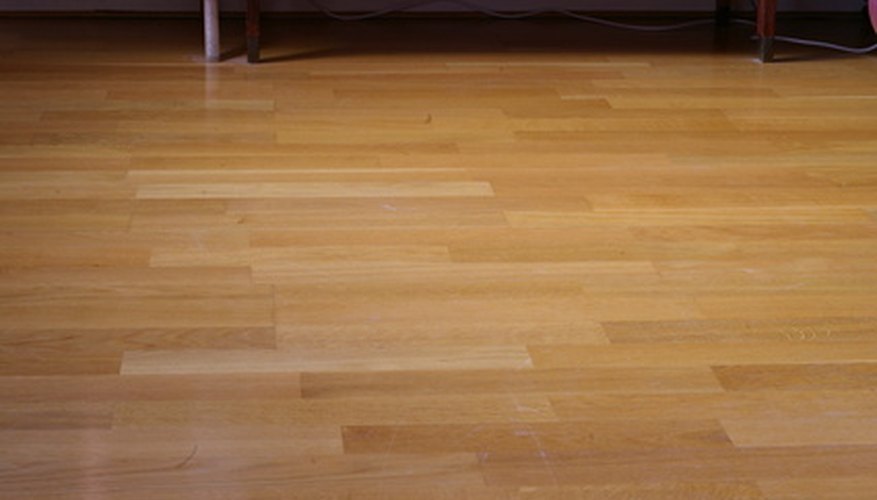Laminate flooring has become a favourite flooring choice due to affordability and the different options available. Laminate flooring is a composite of synthetic materials laminated together with adhesives. Flooring replicates hardwood or stone and can be installed in squares, sections or simulated wood planks. Because the floor is laminated with different materials, rugs placed on the flooring breathe or the rug back and the laminate floor surface will bond together.
Latex-backed Rugs
Latex and rubber are often referred to as if they are the same material, but they aren't. Latex is a synthetic liquid that contains chemicals known as plasticisers, among other compounds. Latex is a common ingredient in interior house paint because soap and water can be used to clean the painted surface without removing the colour. Rugs are often backed with latex to create a slip-resistant, waterproof surface beneath the rug. This same waterproofing eliminates the rug's ability to breathe. Latex-backed rugs will adhere to a laminated or vinyl floor surface and will leave behind a mess of sticky residue or chunks of rug backing when you try to remove the rug.
- Latex and rubber are often referred to as if they are the same material, but they aren't.
- Latex-backed rugs will adhere to a laminated or vinyl floor surface and will leave behind a mess of sticky residue or chunks of rug backing when you try to remove the rug.
Rubber-backed Rugs
Rubber-backed rugs are coated with natural or synthetic rubber. Rubber is elastic and slip resistant. Rubber also creates a waterproof barrier between two surfaces, protecting the surface above the foundation surface. Rubber-backed rugs are relatively easy to wash and create a safe, non-slip surface but can harm a laminate floor. The rubber backing on rugs often will undergo a chemical reaction when placed on top of a laminated floor, trapping gases beneath the rubber and discolouring the laminate surface.
- Rubber-backed rugs are coated with natural or synthetic rubber.
- Rubber-backed rugs are relatively easy to wash and create a safe, non-slip surface but can harm a laminate floor.
Laminate Floor Damage and Staining
The laminate surface of the floor must breathe. Placing a rubber-backed rug onto a laminate floor traps wetness beneath the rubber, allowing a bubble to form on the floor because moisture gets trapped between the synthetic materials forming the "wood" or "stone" and the coating or finish with which the floor is laminated. The rubber-backed rugs prohibit the floor surface from drying naturally. In addition to moisture bubbles, discolouration is caused by rubber- or latex-backed rugs. These stains are caused by chemical reactions between the rubber, latex and the laminate on the floor. Stains can be white or yellow in appearance.
- The laminate surface of the floor must breathe.
- In addition to moisture bubbles, discolouration is caused by rubber- or latex-backed rugs.
Alternate Rug Backing Solutions
Use a dense felt pad beneath rubber- or latex-backed rugs and beneath any nonnatural fibre rug to allow air to circulate between the rug and the laminate flooring. Felt rug pads are available at carpet and home improvement stores in a variety of precut sizes or can be purchased from a bolt and cut to your measurements. The best rug choices for laminate flooring consist of natural fibres, such as jute, grasses, bamboos, cotton or wool. Any rug can be used regardless of the factory backing if you place a felt pad between the rug and the laminate floor.
- Use a dense felt pad beneath rubber- or latex-backed rugs and beneath any nonnatural fibre rug to allow air to circulate between the rug and the laminate flooring.
- Felt rug pads are available at carpet and home improvement stores in a variety of precut sizes or can be purchased from a bolt and cut to your measurements.
